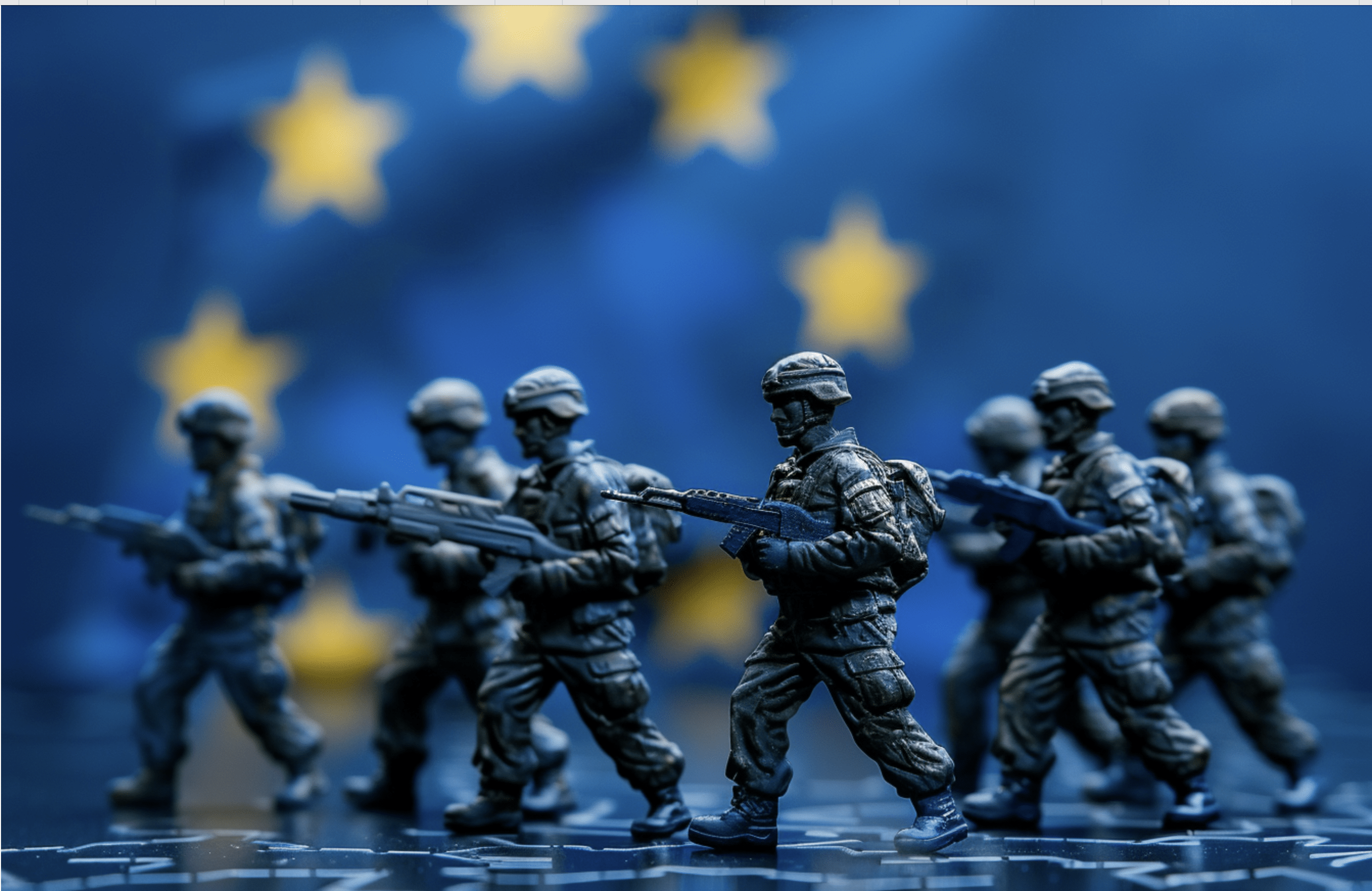Time for a Real European Defense?
The EU-sponsored Eurobarometer polls routinely estimate support for EU defence integration between 70% and 80% of respondents, while a recent poll by the independent Bertelsmann Stiftung polling branch, Euopinions, returned a 87% support level. However, the devil is in the details: what is meant by “European defence policy” can wildly differ between people, and these simple questions present no trade-offs.


Newly announced Commission plan for a European Defence Industrial Strategy lacks ambition: it does not develop further the idea of a European reaction force, even if the initial steps had already been agreed in 2022
The war in Ukraine and the prospect of Donald Trump gaining the US Presidency have put the issue of a European Defense high on the agenda. At a superficial level it seems that military cooperation steadily enjoys a high level of support in public opinion polls. For instance, the EU-sponsored Eurobarometer polls routinely estimate support for EU defence integration between 70% and 80% of respondents, while a recent poll by the independent Bertelsmann Stiftung polling branch, Euopinions, returned a 87% support level.
However, the devil is in the details: what is meant by “European defence policy” can wildly differ between people, and these simple questions present no trade-offs. These polling results are, therefore, suboptimal indicators of true levels of support for policies.
To really understand the political feasibility of various alternative plans for European defense cooperation, one needs to put concrete options on the table.
This was done in Winter 2022 by an international team at Gent University, the University of Amsterdam and the Politecnico of Turin that fielded experimental survey on European defence in France, Germany, Italy, the Netherlands and Spain, allowing them to dig much more in detail on the preferences of citizens (Burgoon et al, 2023).
To do so, we first unpacked the idea of common European defence in six policy dimensions:
the mechanism through which common defence is organized (i.e., through common financial support for national armed forces, or through a proper European army);
the way these programmes are financed (through flat increases in taxation, through progressive increases in taxation, through Eurobonds, or through using instead funds currently used for national defence);
the way decisions are taken (through unanimity vote, through a majority vote of the countries, or through a double majority of both countries and European Parliament members);
whether there are opt-outs from specific missions;
whether military hardware is jointly purchased;
whether the plan pertains a small, brigade-size force (5000 fighting troops and their support staff) or a larger, battle-group size force (60.000 fighting troops and their support staff).
The team used an experimental technique known as ‘conjoint analysis’ to recreate all 196 possible combinations of European defence unions, that were randomly administered to respondents in pairs, side by side.
Respondents had to choose which of the two randomly assigned packages they preferred, and indicate how much they liked or disliked each, independently; the game is repeated three times, so every respondent saw and evaluated six different packages.
This allows us to then estimate the causal effect on public support of a defence union plan having each specific feature, In respect to the alternative; in this way, we can have a much deeper understanding of what people really want when they say that they support a European defence.
All in all, however, the surveyed respondents seemed to hold relatively consistent preferences across countries. In general, all countries preferred more ambitious plans, with no veto powers, no opt-outs options, and joint procurement of materiel.
All countries also supported majority voting decision-making in either form; all countries had a strong preference for financing the scheme through ‘Europeanizing’ existing national expenditure rather than raising new funds, but if new funds had to be raised, then progressive taxation was preferred over Eurobonds or flat taxation increases; finally, France and Italy displayed a preference for EU-level armed forces, while German, Dutch and Spanish respondents were largely indifferent between EU-level forces and joint support for national forces.
All in all, support for the most ambitious combination- including European forces, joint procurement, federal governance, large size, financing through Eurobonds and no optouts – obtained majority support in all five countries, while the minimalist approach (national forces, small size, no procurement, financing through existing national funding, opt-outs and unanimity voting) reached about 35% support on average between countries.
Our data, of course, were collected at the heights of the Russian invasion of Ukraine in winter 2022, before other foreign policy priorities (such as the war in Gaza) kicked in and absorbed public attention; furthermore, they also do not represent the entirety of Europe, since we lack data on CEE countries like Poland, and Northern countries like Sweden.
Yet, they lend credibility to the more recent, less sophisticated polling results, and also suggest that the Commission is right – as they announced on March, 5 – to include joint procurement of military hardware in its new defence plans (European Commission, 2024).
Yet, these newly announced Commission plans lack ambition: they do not develop further the idea of a European reaction force, even if the initial steps had already been agreed in 2022; it did not – for now – bring forward the broad-scoped, Eurobonds-based defence investment package proposed by Kallas and Breton. Instead, the current plans focus on a small 1.5bn investment initiative, whose initial public reception was generally underwhelming and cannot be considered a game changer in rearmament, defence cooperation, or support for Ukraine.
Indeed, our data strongly suggest that western Europeans are unlikely to be enthused by half-backed compromises that communicate lack of ambition and failure to understand the seriousness of the situation: our results clearly show a strong preference for forward-looking, ambitious defence integration plans, and suggest that the Commission should ‘go big or go bust’, hopefully metaphorically only.
References
Burgoon, B., Nicoli, F. and D. Van der Duin (2023) What would Europeans want a Defence Union to look like? Bruegel Working Paper, issue 9/2023
European Commission (2022) a European Rapid Deployment Capacity, EEAS Press
European Commission (2024) Proposal for a Regulation establishing the European Defence Industry Programme and a framework of measures to ensure the timely availability and supply of defence products (‘EDIP’), COM(2024) 150 final
Palacio, A., Merler, S., Nicoli, F. And S. Tagliapietra (2023) How Europe can sustain Russia sanctions. Project Syndicate, Feb. 28, 2022
IEP@BU does not express opinions of its own. The opinions expressed in this publication are those of the authors. Any errors or omissions are the responsibility of the authors.
